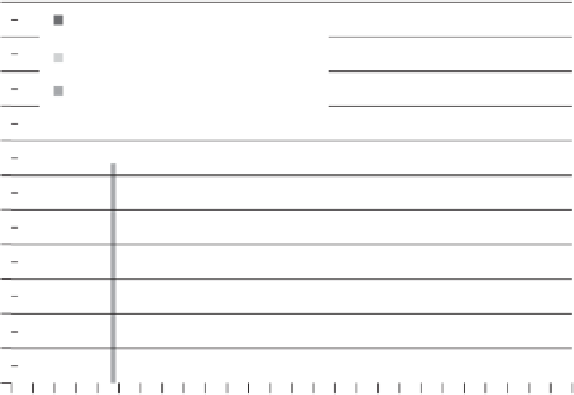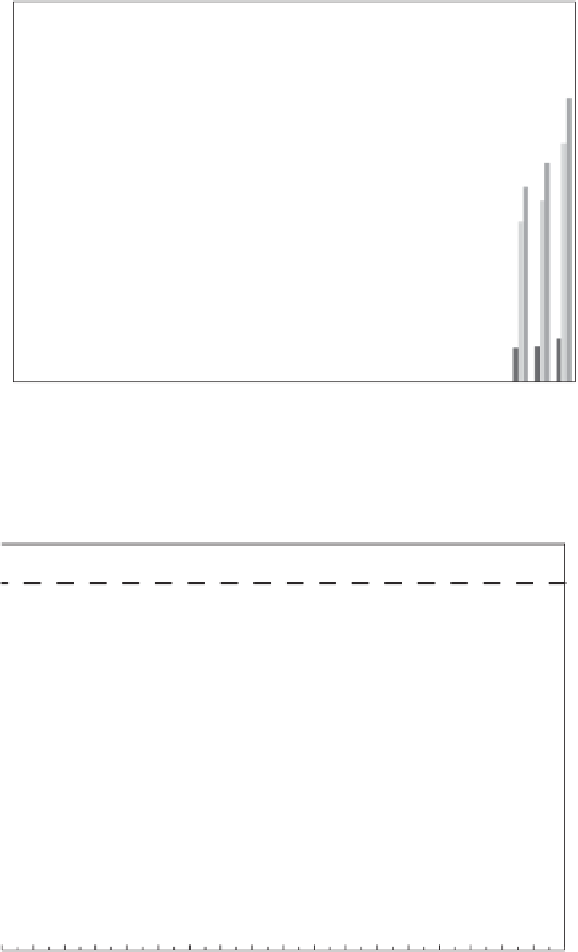Environmental Engineering Reference
In-Depth Information
1100
Potential evaporation during winter
Nov 1 to Apr 18 (mm)
1000
Potential evaporation during active season
Apr 19 to Oct 31 (mm)
900
Total potential evaporation during year
Nov 1 to Oct 31 (mm)
800
700
600
500
400
300
200
100
0
Year
Figure 6.7
Annual potential evaporation for inactive and active portions of each year.
Perhumid
100
Yearly moisture index
Humid
Average
20
Moist humid
0
Dry subhumid
−
33
Semiarid
−
67
Climate classification based
on Thornthwaite (1955)
Arid
−
100
Year
Figure 6.8
Thornthwaite moisture index for each of the 28 years at the site under consideration.
The computer provides a means whereby moisture infil-
tration can be studied as the solution of a partial differential
seepage equation where ground surface moisture flux condi-
tions are specified. The information required for analyzing
problems within a boundary value context is quite standard.
It is necessary to know the ground surface geometry and
have a fairly well-informed appreciation of the underlying
stratigraphic sequences.
Approximate conditions must be designated for all bound-
aries of the problem. For unsaturated soils problems it is
the characterization of the ground surface (net) moisture
flux boundary condition that is of primary importance. The
assessment of the ground surface moisture flux boundary
conditions largely relies on past measured weather condi-
tions at the site. Starting, or “initial,” conditions must also
be specified for the analysis.
The characterization of the (unsaturated) soil properties
forms another important part of the required input informa-
tion. These are the primary factors that must be known. And
it is within the context of a boundary value analysis that the
geotechnical engineer can investigate a series of questions
that might be of interest to the future performance of the
engineered structure.























































Search WWH ::

Custom Search